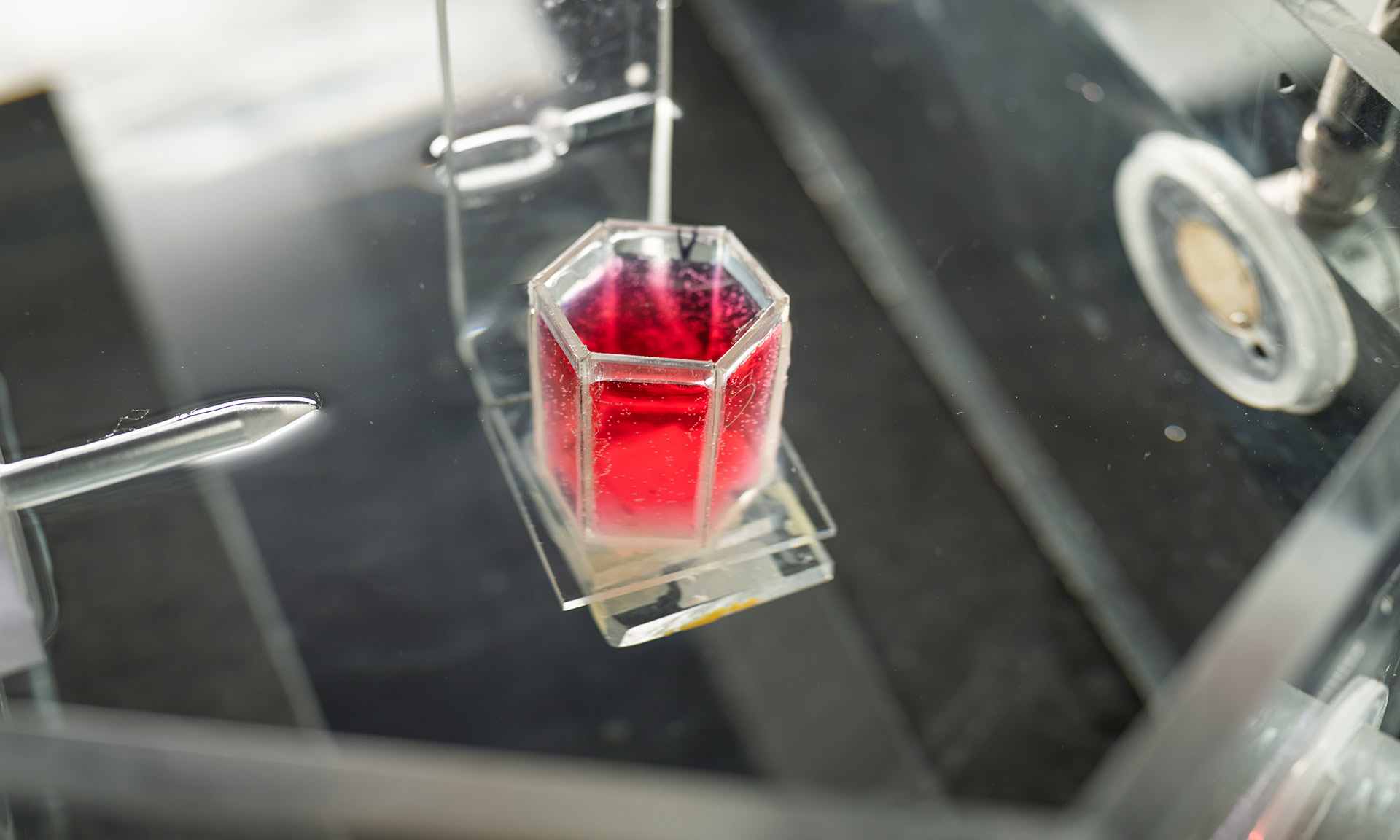In an oven, aluminum is remarkable because it can serve as foil over a casserole without ever becoming hot itself.
However, put aluminum in a crucible of extraordinarily high pressure, blast it with high-powered lasers like those at the Laboratory for Laser Energetics, and even more remarkable things happen. Aluminum stops being a metal. It even turns transparent.
Exactly how and why this occurs is not yet clear. However, LLE scientists and their collaborators say a $4 million grant—from the Quantum Information Science Research for Fusion Energy Sciences (QIS) program within the Department of Energy’s Office of Fusion Energy Science—will help them better understand and apply the quantum (subatomic) phenomena that cause materials to be transformed at pressures more than a million—even a billion—times the atmospheric pressure on Earth.”
The potential dividends are huge, including:
- Superfast quantum computers immune to hacking
- Cheap energy created from fusion and delivered over superconducting wires.
- A more secure stockpile of nuclear weapons as a deterrent.
- A better understanding of how planets and other astronomical bodies form – and even whether some might be habitable.
“This three-year effort, led by the University of Rochester, will leverage world-class expertise and facilities, and open a new chapter of quantum matter exploration,” says lead investigator Gilbert “Rip” Collins, who heads the University’s high-energy-density physics program. The project also includes researchers from the University of Illinois at Chicago, the University of Buffalo, the University of Utah, and Howard University and collaborators at the Lawrence Livermore National Laboratory and the University of Edinburgh.
Understanding quantum behavior
The chief players in quantum mechanics are electrons, protons, photons, and other subatomic particles. Quantum mechanics prescribe only discrete energies or speeds for electrons. These particles can also readily exhibit “duality”—at times acting like distinct particles, at other times taking on wave-like characteristics as well.
However, until recently a lot of their quantum behaviors and properties could be observed only at extremely low, cryogenic temperatures. At low temperatures, the wave-like behavior causes electrons, in layperson terms, “to overlap, become more social and talk more to their neighbors all while occupying discrete states,” says Mohamed Zaghoo, an LLE scientist and project team member. This quantum behavior allows them to transmit energy and can result in superconductive materials.
“The new realization is that you can achieve the same type of ‘quantumness’ of particles if you compress them really, really tightly,” Zaghoo says. This can be achieved in various ways, from blasting the materials with powerful, picoseconds laser bursts to slowly compressing them for days, even months between super-hard industrial diamonds in nanoscale “anvils.”
“Now you can say these materials can only exist under really high pressures, so to duplicate that under normal conditions is still a challenge,” Zaghoo concedes. “But if we are able to understand why materials acquire these exotic behaviors at really high pressures, maybe we can tweak the parameters, and design materials that have these same quantum properties at both higher temperatures and lower pressures. We also hope to build a predictive theory about why and how certain kinds of elements can have these quantum properties and others don’t.”
Here’s an example of why this is an exciting prospect for Zaghoo and his collaborators. Aluminum not only becomes transparent, but also loses its ability to conduct energy at extremely high pressure. If it happens to aluminum, it’s likely it will happen with other metals as well. Chips and transistors rely on metallic oxides to serve as insulating layers. And so, the ability to use high pressure to “uniquely tune” the quantum properties of various metals could lead to “new types of oxides, new types of conductors that make the circuits much more efficient, and lose less heat,” Zaghoo says.
“We would be able to design better electronics.”
And that could help address concerns that Moore’s law—which states the number of transistors in a dense integrated circuit doubles about every two years—cannot continue to be sustained using existing materials and circuitry.
Rochester a leader in high-energy-density physics
In addition to creating new materials, a major thrust of the project is to be able to describe and explore those materials in meaningful ways.
“The instrumentation and diagnostics are not there yet,” Zaghoo says. So, part of the proposal is to develop new techniques to “look at these materials and actually see something of substance.”
Much of the project will be done at LLE and at affiliated labs in the University’s Department of Mechanical Engineering. Those labs are led by Ranga Dias, an assistant professor who uses diamond anvil cells to compress hydrogen-rich materials, and Niaz Abdolrahim, an assistant professor who uses computational techniques to understand the deformation of nanoscale metals and other materials.
However, the lab of Russell Hemley at the University of Illinois at Chicago, for example, will also assist the effort to synthesize new materials using diamonds. And Eva Zurek at the SUNY University at Buffalo will be in charge of developing new theoretical models to describe the quantum behaviors that lead to new materials.
“Our scientific team is both diverse and contains top leaders in the fields of high-energy density science, emergent quantum materials, plasmas, condensed matter and computations,” says Collins. “Extensive outreach, workshops and high-profile publications resulting from this work will engage a world-wide community in this extreme quantum revolution.”
Established in 1970 to investigate the interaction of intense radiation with matter, LLE has played a leading role in the quest to achieve nuclear fusion in the lab, with a particular emphasis on inertial confinement fusion.
Two years ago, it launched its high-energy-density physics initiative under the leadership of Collins, who had previously directed Lawrence Livermore National Laboratory’s Center for High Energy Density Physics.
In addition to drawing upon LLE’s scientists and facilities, the program has also benefited from close collaborations with engineering and science faculty and their students on the University’s nearby River Campus. The synergy has resulted in numerous grants and papers.



